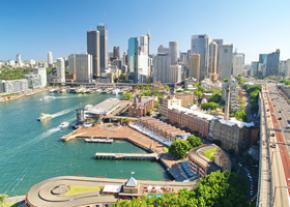
Quality of life, internationally enviable salaries, and great weather typically lure the average expat ‘down under’ to Australia. But that’s mostly where the similarities end, as Australia’s huge land mass and market economy ensures a wealth of industries, potential destinations, and expatriate background.
Rumoured to be a result of rivalry between the country’s two largest cities, Sydney and Melbourne, Australia’s capital city is the purpose built Canberra, which sits almost equidistant between the two metropolitan areas.
After Sydney and Melbourne, Brisbane is the third largest city, rounding off Australia’s major metropolitan areas that inhabit the ever-popular East coast of the country, famed for its natural beauty and sight seeing, such as the Great Barrier Reef and Whitsunday Islands to the North, the Gold Coast in the centre, and the Twelve Apostles to the very South.
On the South coast of Australia sits Adelaide, the country’s fifth largest city, perhaps best known for its annual comedy festival. Meanwhile, Australia’s fourth largest city, Perth sits on the West coast of the country.
Both Perth and Adelaide play host to much of the country’s mining industry, which has been credited for keeping the country’s economy in the black during recent global financial troubles. However, around 70% of Australia’s GDP comes from the service sector, with notable strengths in tourism, education, and financial services.
Many new expats choosing to relocate to Australia are drawn to do so as a result of the country’s famous quality of life. All five major cities regularly feature in the various global quality of life indexes, in part a result of their proximity to stunning beaches and focus on outdoor public spaces.
But at the same time, it’s relatively easy to live outside of the big cities in the outer suburbs along the coast, which usually offer good transport links for inner-city commutes, and lower house prices.
